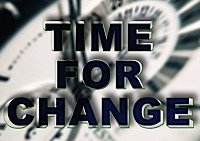
For the past few years, I have read over what seems like hundreds of blogs and thousands of tweets that either directly claim or indirectly hint at a disruption of traditional venture capital. For some, the factors relate to the economy, that limited partners and institutional investors were reviewing their investment approaches. For others, it seemed as if there was too much money in the asset class, that there was too much money chasing too few real opportunities. There seemed to be a long laundry list of why venture capital was undergoing this shift, but never any thread that could lay out all the factors and synthesize just how each factor contributed to shift, until now…






 ’m convinced that people who have fun at work are more innovative, as well as happier. I don’t have any big scientific studies to prove this, but in my considerable business experience, I haven’t seen many successes come out of a group of fearful pessimists or unhappy people.
’m convinced that people who have fun at work are more innovative, as well as happier. I don’t have any big scientific studies to prove this, but in my considerable business experience, I haven’t seen many successes come out of a group of fearful pessimists or unhappy people.












